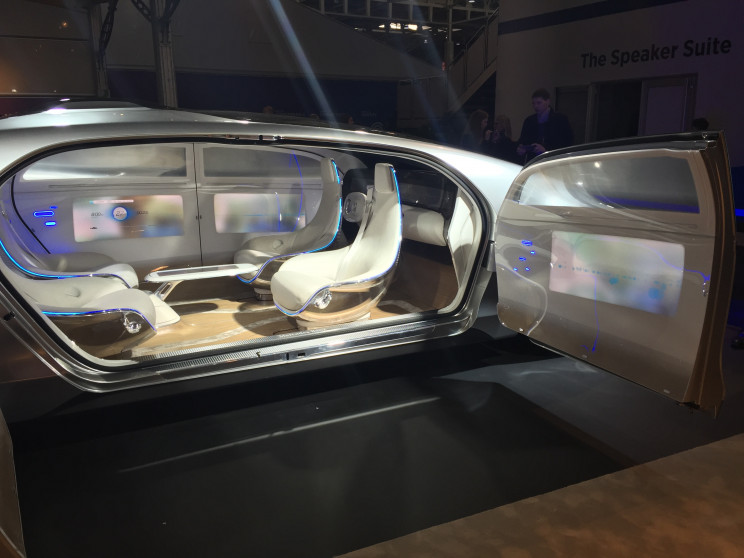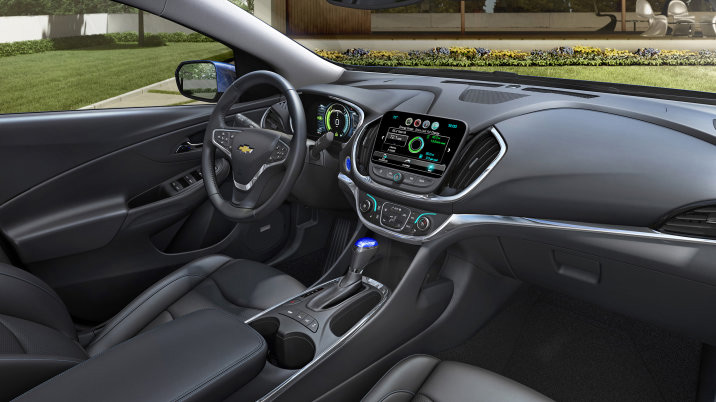

The connected cockpit in electric vehicles is a transformative innovation, connecting infotainment systems seamlessly with vehicle controls to craft a future where driving is more than just transportation. Imagine a world where your electric vehicle not only takes you from point A to point B, but also offers personalized entertainment, real-time data, and enhanced safety features all through an intuitive interface. In this article, we’ll dive deep into the connected cockpit, exploring its key aspects, challenges, and the promising future it holds for electric vehicle enthusiasts. We will look at how these systems enhance driving experiences, create intuitive interfaces, and integrate advanced driver-assistance systems, along with potential pitfalls and future developments.
The Essence of the Connected Cockpit
Defining the Concept
The connected cockpit in electric vehicles represents a paradigm shift in the automotive industry, integrating advanced infotainment systems into a seamlessly connected environment. This intricate network allows drivers to control various vehicle functions, access entertainment options, and receive real-time data, all through intuitive interfaces. It’s more than just technology; it’s about seamlessly blending entertainment with driving controls to optimize the overall driving experience. This holistic approach to vehicle control and infotainment enhances both safety and efficiency.
Challenges and Opportunities
While the connected cockpit offers immense potential, several challenges need addressing. One key aspect is user interface design, ensuring ease of access and intuitive functionality to prevent distraction while driving. Ensuring data security and privacy within the connected network is critical to maintain trust and confidence in the technology. Furthermore, the connected cockpit demands robust integration with battery management systems and charging infrastructure, which often have varied protocols.
Enhancing the Driving Experience
Infotainment Systems
The integrated infotainment systems in the connected cockpit play a pivotal role in enhancing the driver’s experience. Modern systems often feature touchscreen displays, allowing drivers to control various functions like navigation, music, and climate control without taking their hands off the wheel. Features such as customizable dashboards and personalized settings contribute to a more engaging and tailored experience. Many vehicles are adopting voice control technologies, further augmenting the convenience and reducing distractions, which is especially crucial in electric vehicles where the focus is on driver safety.
Personalization and Customization
The real strength of a connected cockpit lies in its personalization capabilities. Drivers can customize the infotainment system to reflect their preferences and driving style. This feature is also crucial for promoting engagement and a seamless experience, crucial to keeping a driver satisfied and wanting to use all the features the vehicle offers. Imagine tailoring the navigation system with favorite music playlists or adjusting the interior lighting to create a desired ambience—this type of customization elevates the driving experience, turning routine journeys into personalized journeys.
Safety and Security in the Connected Cockpit
Advanced Driver-Assistance Systems
One of the most significant benefits of the connected cockpit is its integration with advanced driver-assistance systems (ADAS). Systems like adaptive cruise control and lane-departure warnings can be seamlessly integrated into the infotainment screen, making driving safer and more intuitive. This integration not only improves safety but also enhances the overall driving experience by minimizing driver workload and improving response times. Many leading automakers are experimenting with features that anticipate driver needs, adding a layer of safety and convenience to electric vehicles.
Data Security and Privacy
The connected cockpit relies heavily on data transmission and processing. Therefore, data security and privacy are paramount. Robust cybersecurity measures are essential to protect sensitive driver data from unauthorized access and malicious attacks. Encrypting data transmissions and using multi-factor authentication are crucial steps towards building trust and confidence among drivers. Furthermore, transparent data policies and usage guidelines are essential.
The Future of Connected Cockpits
Integration with External Services
Future developments in connected cockpits will likely involve deeper integration with external services. This could include integration with navigation systems, weather forecasts, and real-time traffic updates, providing drivers with a complete overview of their journey. Further integration with external services would add to the comfort and efficiency of electric vehicles.
Artificial Intelligence and Machine Learning
The integration of AI and machine learning is transforming the connected cockpit. Imagine personalized recommendations for music, navigation adjustments based on traffic patterns, and even predictive maintenance alerts. These advancements will revolutionize the driving experience, making it both safer and more convenient for drivers. The AI integration will improve the overall experience, optimizing the journey for drivers across various applications.
User Interface Design Considerations
Intuitive Interfaces
A key aspect of the connected cockpit is creating intuitive and user-friendly interfaces. Drivers should be able to access critical information and functions quickly and easily without distractions. Voice control features and logically organized menus are necessary to ensure that the experience feels natural and doesn’t take away from the focus required for driving. This is particularly important for electric vehicle users, as they require a safe and intuitive experience for the handling of their vehicle and its functions.
Designing for Safety
The design of the connected cockpit should prioritize safety above all else. Visual elements should be clear, readily discernible, and easy to interpret, even in rapidly changing conditions. Excessive clutter or distracting animations should be avoided, especially during critical driving moments. This ensures the safety and well-being of the driver while enabling the vehicle’s safety features to work intuitively.
The Impact on Customer Experience
Enhanced Safety Features
The connected cockpit enhances the safety features of electric vehicles. Drivers have access to various safety features, reducing the risk of accidents and improving driving experience. By integrating advanced driver-assistance systems into the cockpit interface, safety features become even more accessible and easier to use.
Personalized Experiences
The connected cockpit enhances customer experience through personalization. Drivers can tailor the infotainment system to their preferences, maximizing comfort and enjoyment. The personalized experience improves the driver’s engagement, enjoyment, and satisfaction with the vehicle, leading to a more positive and long-lasting experience.
Conclusion
FAQ
FAQ
What are the key challenges in developing connected cockpits for electric vehicles?
Several factors contribute to the complexity of developing connected cockpits in electric vehicles. One key challenge is ensuring seamless integration of the infotainment system with the vehicle’s other functionalities, including battery management, charging, and navigation. Another challenge lies in maintaining a smooth user experience while managing a multitude of complex interactions between the system and the driver. Data security is also a critical concern, and manufacturers must implement robust security measures to protect sensitive driver data. Finally, the rapid evolution of technology requires ongoing development and upgrades to ensure the system remains current and user-friendly. These aspects require careful planning and coordination between different teams within the automotive industry to stay ahead of the curve and meet consumer demands.
How do advanced driver-assistance systems (ADAS) enhance the connected cockpit experience?
Advanced driver-assistance systems, like adaptive cruise control and lane-keeping assist, are integrated seamlessly into the connected cockpit to create an enhanced user experience. These features are crucial for enhancing safety and making the driving experience more intuitive. Integration with infotainment systems allows drivers to effortlessly access crucial ADAS information and features, creating a more connected and responsive driving environment. The connected nature enables real-time adjustments and updates, ensuring drivers benefit from up-to-date safety and efficiency data.
In conclusion, the connected cockpit is revolutionizing the driving experience in electric vehicles. By seamlessly integrating infotainment systems with vehicle controls, manufacturers are crafting a future where driving is not just about getting from point A to B, but about a personalized and engaging journey. To fully unlock the potential of this technology, drivers need to embrace the learning curve and explore the available features. Further research and development in areas like AI-powered personalization and advanced driver-assistance systems are crucial for maintaining a high level of interest and driving innovation forward. Dive deeper into the connected cockpit today by exploring the various infotainment systems available in today’s electric vehicles!